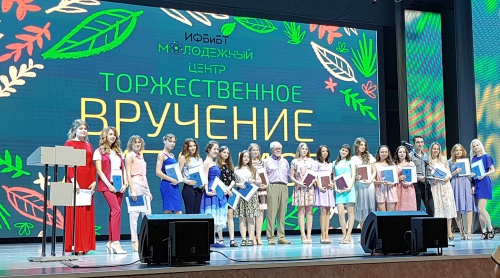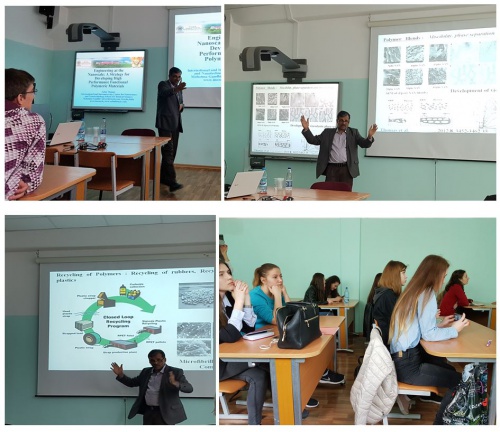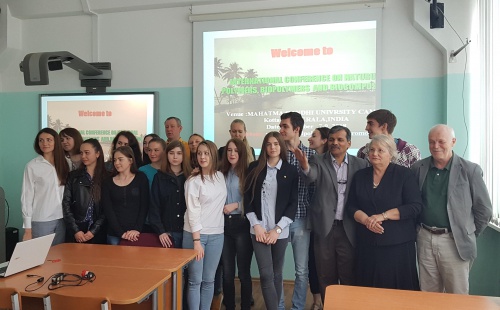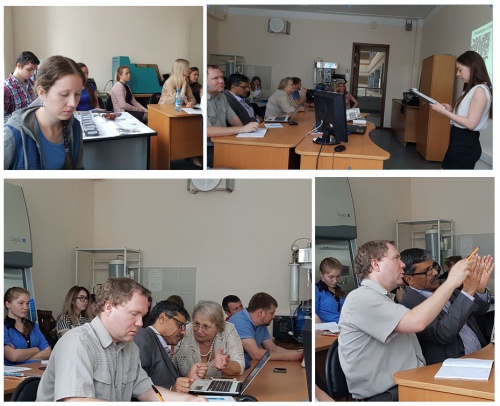



|
Студенты – исполнители мега-гранта, получившие степень магистра в 2020 г. по направлению 06.04.01 «Биология», магистерская программа «Микробиология и биотехнология», успешно защитившие выпускные квалификационные работы
| Гришкина (Косенок) Маргарита Дмитриевна, «Синтез и свойства полигидроксиалканоатов, содержащих мономеры 4-гидроксивалерата» | Лавицкая (Дайненко) Елена Анатольевна, «Получение долговременных форм пестицидов в виде гранул и таблетированных форм на основе П(3ГБ)» |
| Петровская Ольга Дмитриевна «Конструирование и исследование эффективности гербицидных препаратов пролонгированного действия на основе П(3ГБ)» | Петровская Оксана Дмитриевна «Синтез полигидроксиалканоатов на различных сахарах в качестве единственного источника углерода, исследование методов выделения биополимера из биомассы» |
| Сапожникова Кристина Юрьевна «Влияние условий культивирования на рост бактерий Cupriavidus necator B-10646 и синтез полигидроксиалканоатов» | |
|
Исполнители мега-гранта принимают участие в профессиональной переподготовке молодых научных сотрудников Молодые научные сотрудники Института леса СО РАН (ФИЦ «КНЦ СО РАН») Г.И. Антонов и О.Э. Пашкеева на базе кафедры биотехнологии СФУ и мега-гранта, выполняемого Лабораторией инновационных препаратов и материалов, прошли курсы повышения квалификации по дополнительной профессиональной программе «БИОТЕХНОЛОГИЯ» (объем 144 ч) |
Лекция профессора Sabu Thomas «Nanotechnology for Sustainable Agriculture» В рамках рабочего совещания исполнителей мега-гранты «Агропрепараты нового поколения: стратегия конструирования», ведущим ученым, вице-канцлером Международного и межвузовского центра нанонауки и нанотехнологий Университета Махатмы Ганди, Индия, профессором Sabu Thomas была прочитана лекция «Nanotechnology for Sustainable Agriculture».
В рамках лекции были затронуты следующие вопросы:
• Нанотехнологии для роста растений;
• Нанотехнология для замедленного высвобождения удобрений;
• Нанотехнологии для консервирования продуктов питания;
• Нанотехнология для очистки воды;
• Социальные, экологические и этические проблемы
Лекция вызвала живой интерес, как у преподавателей, так и студентов университета. |
Курс лекций "Nanomaterials" ведущего ученого, профессора Сабу Томаса, руководителя «Лаборатории инновационных препаратов и материалов» СФУ, директора Международного и национального университетского Центра нанонауки и нанотехнологии, вице-президента Университета Махатми Ганди, Индия С 30 октября по 01 ноября 2018 г. состоялся курс лекций «Nanomaterials» ведущего ученого Сабу Томаса, руководителя Лаборатории инновационных препаратов и материалов. |
ЛЕКЦИЯ № 1. Chemistry of Nanomaterials and their Polymer Nanocomposites 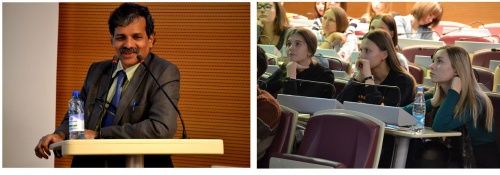 The historical development of the science and technology of nanomaterials will be presented from the very early stages. The major contributors to the field of nanoscience and nanotechnology will be reviewed. The basic definitions and concepts will be discussed.. The applications of nanomaterials in all the major fields will be presented. The field of polymer nanocomposites is stimulating both fundamental and applied research because these nanoscale materials often exhibit physical and chemical properties that are dramatically different form conventional microcomposites. A large number of nano particles, layered silicates and polymeric whiskers are being used of the preparation of nano composites. Since the Toyota research group's pioneering work on nylon6/layered silicate nanocomposites, polymer nanocomposites containing layered silicates have attracted much attention. The polymer/layered nanocomposites can exhibit increased modulus, decreased thermal expansion coefficient, reduced gas permeability, increased solvent resistance and enhanced ionic conductivity when compared to the polymer alone. In the proposed talk, the different preparation techniques for polymer nanocomposites will be discussed. The role of various surfactants in improving the polymer/filler interaction will be reviewed. The various characterization techniques for nanocomposites will be addressed. In the case of semi crystalline polymers the role of crystallization on the the intercalation and exfoliation will be discussed. The important properties of nanocomposites will also be presented. I will also present recent developments in cellulose nanocomposites and bio-nanocomposites. Finally the new developments in the field of nanomedicne (drug delivery and scaffolds) will be discussed in detail
 ЛЕКЦИЯ № 1. Chemistry of Nanomaterials and their Polymer Nanocomposites (pdf, 4407КБ) ЛЕКЦИЯ № 1. Chemistry of Nanomaterials and their Polymer Nanocomposites (pdf, 4407КБ) |
ЛЕКЦИЯ № 2. Development of Polymer Nanocomposite Scaffolds for Tissue Engineering  Biodegradable polymer scaffolds are useful materials to integrate the femoral part of the implant with the bone, and provide a matrix for cellular growth. Synthetic biodegradable polymers can provide temporary scaffold for cell adhesion and expansion both in vitro and in vivo and guide tissue regeneration with defined sizes and shapes. The fibrillar structure is important for cell attachment, proliferation and differentiated function in tissue engineering. The structure allows for growth and is convenient for transport of nutrients. The synthetic polymers such as Polycaprolactone (PCL), Poly l-lactic acid (PLLA), and their copolymers have attracted wide attention for their biodegradation in the human body and are used for tissue engineering. Several methods have been practiced to create highly porous scaffold including fiber bonding, solvent casting/ salt leaching, gas foaming, phase separation and electrospinning. Out of which electrospinning is the simple and cost effective technique for producing nanofibers from polymer solution. Introduction of organically modified clay in polymers leads to different types of structures which include intercalated or exfoliated morphology. The nano reinforcement increases the mechanical rigidity, mobility, stiffness and biodegradability in biodegradable polymers. Moreover it also increases the porosity of the polymer nanocomposite. Nanoparticle reinforced scaffolds are yet to achieve importance. In fact they have wide range of interest in tissue engineering. Literature reports regarding nanoparticle reinforced scaffolds are very scant. Hence the present investigation will be interesting and will find application in tissue engineering in the foreseeable future. In the present talk the state of the art on the synthesis, morphology, structure, properties and applications of dual porous nanocomposite scaffolds will be presented.
 ЛЕКЦИЯ № 2. Development of Polymer Nanocomposite Scaffolds for Tissue Engineering (pdf, 9546КБ) ЛЕКЦИЯ № 2. Development of Polymer Nanocomposite Scaffolds for Tissue Engineering (pdf, 9546КБ) |
Лекция № 3. Production of Nanomaterials from Biowastes 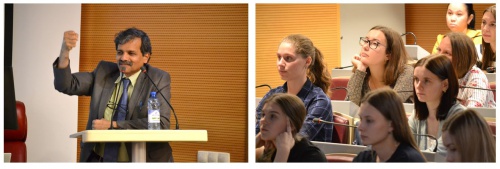 Green chemistry started for the search of benign methods for the development of nanoparticles from nature and their use in the field of antibacterial, antioxidant, and antitumor applications. Bio wastes are eco-friendly starting materials to produce typical nanoparticles with well-defined chemical composition, size, and morphology. Cellulose, starch, chitin and chitosan are the most abundant biopolymers around the world. All are under the polysaccharides family in which cellulose is one of the important structural components of the primary cell wall of green plants. Cellulose nanoparticles(fibers, crystals and whiskers) can be extracted from agrowaste resources such as jute, coir, bamboo, pineapple leafs, coir etc. Chitin is the second most abundant biopolymer after cellulose, it is a characteristic component of the cell walls of fungi, the exoskeletons of arthropods and nanoparticles of chitin (fibers, whiskers) can be extracted from shrimp and crab shells. Chitosan is the derivative of chitin, prepared by the removal of acetyl group from chitin (Deacetylation). Starch nano particles can be extracted from tapioca and potato wastes. These nanoparticles can be converted into smart and functional biomaterials by functionalisation through chemical modifications (esterification, etherification, TEMPO oxidation, carboxylation and hydroxylation etc) due to presence of large amount of hydroxyl group on the surface. The preparation of these nanoparticles include both series of chemical as well as mechanical treatments; crushing, grinding, alkali, bleaching and acid treatments. Transmission electron microscopy (TEM), scanning electron microscopy (SEM) and atomic force microscopy (AFM) are used to investigate the morphology of nanoscale biopolymers. Fourier transform infra-red spectroscopy (FTIR) and x ray diffraction (XRD) are being used to study the functional group changes, crystallographic texture of nanoscale biopolymers respectively. Since large quantities of bio wastes are produced annually, further utilization of cellulose, starch and chitins as functionalized materials is very much desired. The cellulose, starch and chitin nano particles are currently obtained as aqueous suspensions which are used as reinforcing additives for high performance environment-friendly biodegradable polymer materials. These nanocomposites are being used as biomedical composites for drug/gene delivery, nano scaffolds in tissue engineering and cosmetic orthodontics. The reinforcing effect of these nanoparticles results from the formation of a percolating network based on hydrogen bonding forces. The incorporation of these nano particles in several bio-based polymers have been discussed. The role of nano particle dispersion, distribution, interfacial adhesion and orientation on the properties of the eco friendly bio nanocomposites have been carefully evaluated.
 Лекция № 3. Production of Nanomaterials from Biowastes (pdf, 13265КБ) Лекция № 3. Production of Nanomaterials from Biowastes (pdf, 13265КБ) |
Исполнители мега-гранта принимают активное участие в подготовке высококвалифицированных специалистов-биотехнологов Базовая кафедра биотехнологии, реализующая в рамках созданной Лаборатории инновационных препаратов и материалов мега-гран " Агропрепараты нового поколения: стратегия конструирования и реализация", проводит научные исследования по новейшим направлениям биотехнологии и осуществляет подготовку бакалавров, магистров, аспирантов по направлению «БИОЛОГИЯ» .
Подготовка бакалавров проводится по профилю подготовки 06.03.01.11 «Биоинженерия и биотехнология» с присвоением квалификации (степени) "Академический бакалавр"; подготовка магистров – по профилю подготовки 06.04.01.01 «Микробиология и биотехнология» с присвоением квалификации (степени) "Магистр"
Ежегодно в рамках образовательных программ проходят обучения и выполняют квалификационные работы порядка 60-70 студентов, в том числе 8 являются исполнителями мега-гранта.
|
19–21 июня состоялись защиты выпускных квалификационных работ студентов, в подготовке которых принимают активные участие исполнители мега-гранта, сотрудники базовой кафедры биотехнологии.
В 2018 г. кафедрой выпущено 9 магистров и 21 бакалавр, 10 студентов (30% выпускников) получили дипломы с отличием .
2 июля в Конгресс-холле СФУ состоялось торжественное вручение дипломов выпускникам – биотехнологам |
Вводный курс лекций исполнителей мега-гранта, магистров и бакалавров, участвующих в проекте В июне для исполнителей мега-гранта, магистров и бакалавров, участвующих в проекте, профессор Сабу Томас прочитал цикл лекций «Nanoscale engineering: design of functional nanocomposites». |
Предзащиты дипломов с участием ведущего ученого, профессора Сабу Томаса В период 7–15 июня 2018 г. с участием ведущего ученого, профессора Сабу Томаса прошла серия семинаров и предзащит, на которых были представлены студентами подготовленные диссертационные и дипломные работы |
|
| |




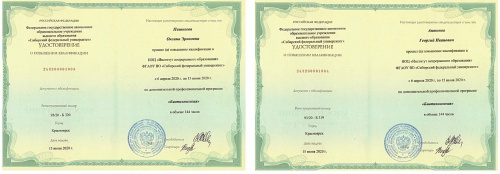

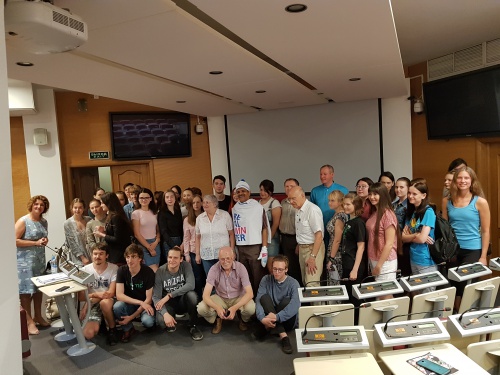
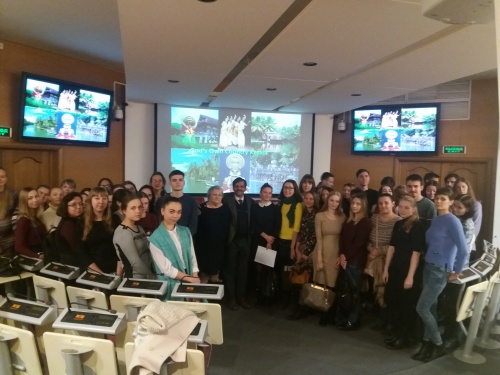

 ЛЕКЦИЯ № 1. Chemistry of Nanomaterials and their Polymer Nanocomposites (pdf, 4407КБ)
ЛЕКЦИЯ № 1. Chemistry of Nanomaterials and their Polymer Nanocomposites (pdf, 4407КБ)
 ЛЕКЦИЯ № 2. Development of Polymer Nanocomposite Scaffolds for Tissue Engineering (pdf, 9546КБ)
ЛЕКЦИЯ № 2. Development of Polymer Nanocomposite Scaffolds for Tissue Engineering (pdf, 9546КБ)
 Лекция № 3. Production of Nanomaterials from Biowastes (pdf, 13265КБ)
Лекция № 3. Production of Nanomaterials from Biowastes (pdf, 13265КБ)